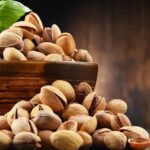Introduction:
Cellulite is a common concern affecting individuals of various body types, and its appearance is influenced by a multitude of factors. While genetics, hormonal changes, and lifestyle play crucial roles, one often overlooked aspect is the impact of diet. In this extensive guide, we’ll delve into the intricate relationship between cellulite and nutrition, exploring how a well-balanced diet can serve as a powerful ally in the battle against cellulite.
Understanding the Factors:
To comprehend why cellulite emerges, it’s essential to recognize three primary factors: predisposing factors (genetics), determining factors (hormonal and circulatory influences), and triggering factors (lifestyle and dietary habits).
- Predisposing Factors:
Genetic predisposition, encompassing factors such as sex, race, body type, fat tissue distribution, and susceptibility to circulatory issues, significantly influences cellulite development. Notably, women of Caucasian descent tend to be more prone to cellulite.
- Determining Factors:
Hormonal shifts during puberty, postpartum, and menopause, along with conditions like hyperestrogenism, hyperinsulinism, and hypothyroidism, contribute to the aggravation of cellulite. Neurovegetative factors and veno-lymphatic insufficiency also play a role.
- Triggering Factors:
Unhealthy lifestyle habits, particularly related to diet, contribute to the onset of cellulite. In this context, the intricate link between nutrition and cellulite becomes evident.
The Impact of Weight:
Contrary to common belief, cellulite is not exclusive to individuals with excess weight. Thin individuals may also experience cellulite, while some overweight or obese individuals may not. However, for those predisposed to cellulite, higher body weight often intensifies its visibility.
The Significance of Nutrition:
Indeed, nutrition plays a pivotal role in both preventing and alleviating cellulite. A balanced diet featuring a prevalence of vegetables, particularly those with diuretic properties like asparagus, onion, celery, and zucchini, proves beneficial. Fruits such as pineapple and apple, incorporated with minimal or no salt, are essential.
Key Dietary Recommendations:
- Vitamin C-Rich Foods: Including foods high in vitamin C, such as bell peppers, citrus fruits, broccoli, Brussels sprouts, strawberries, parsley, papaya, gooseberry, and watercress, is crucial. The antioxidant properties of vitamin C strengthen the circulatory system and maintain skin firmness and elasticity.
- Beta-Carotene Sources: Antioxidant-rich beta-carotenes, found in vegetables like carrots, peppers, sweet potatoes, pumpkins, and dark green leafy vegetables such as spinach and broccoli, aid in synthesizing vitamin A. This process stimulates the immune system and promotes melanin production in the skin.
- Limiting Sodium and Refined Sugar: Reducing intake of sodium-rich foods, like salt, and minimizing consumption of refined sugar and alcohol is vital. These substances contribute to fluid retention and can exacerbate cellulite development.
- Hydration: Adequate hydration is integral to activating circulation and combating cellulite. For those averse to plain water, herbal teas, flavored water with lemon or fruits, vegetable broths, and soups can supplement fluid intake.
- Incorporating Ginger and Turmeric: Harnessing the anti-inflammatory properties of ginger and turmeric can be advantageous. These ingredients can be included in infusions or incorporated into various dishes and creams.
Conclusion:
In conclusion, understanding the multifaceted nature of cellulite and its intricate connections to genetics, hormones, and lifestyle empowers individuals to take proactive steps. Optimizing one’s diet emerges as a fundamental strategy in this endeavor. By embracing a nutrient-rich, balanced diet, individuals can positively influence their circulatory health, skin elasticity, and overall well-being. This comprehensive guide serves as a valuable resource for those seeking to navigate the nuanced relationship between nutrition and cellulite, promoting informed choices and healthy habits.
For further insights and detailed recommendations, explore our additional resources and follow our dietary guidelines for optimal cellulite management. Your journey to smoother, healthier skin begins with the right choices and a commitment to a cellulite-friendly lifestyle.













